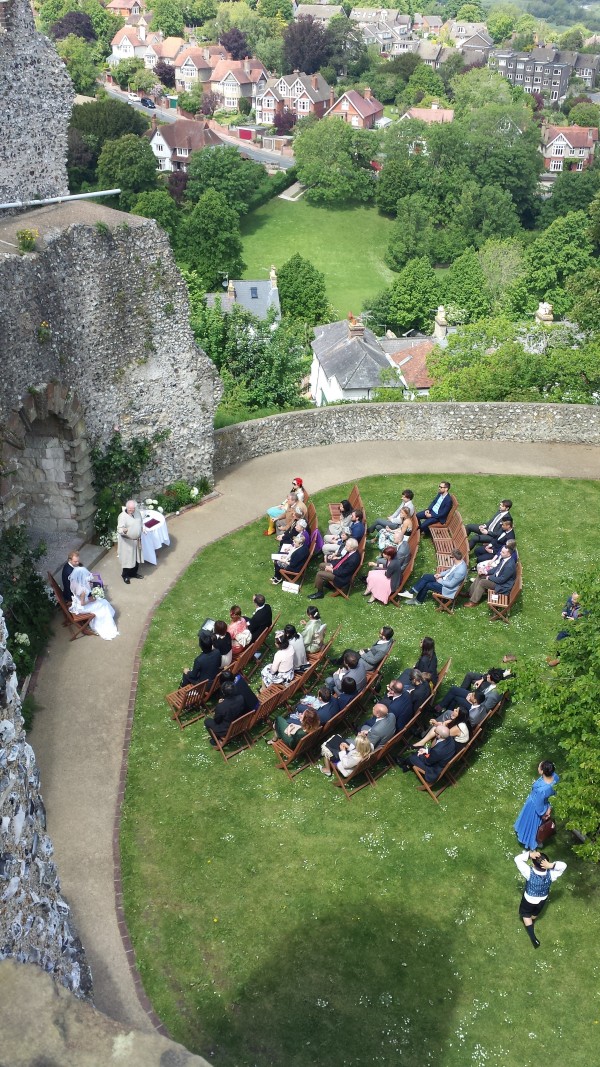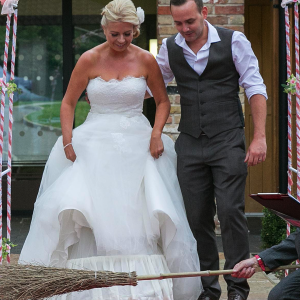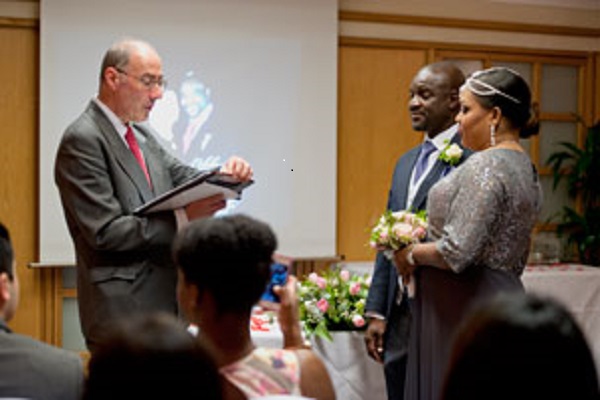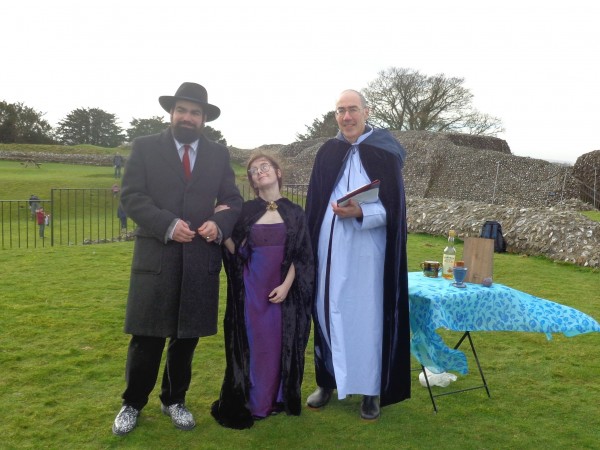
by Michael | Jul 14, 2015 | Blog
In my experience, most couples – especially the men! – don’t really know what can go into their wedding service. There are exceptions, of course, but most people have enough trouble accepting that there are alternatives to either a full religious church service or the somewhat sterile register office ceremony.
Creative ceremonies are very much a possibility, and all you actually need to ensure is that the legal formalities are catered for.
What do I mean by “creative”? Well, how long is a piece of string?
To begin with, do you plan to hold the ceremony indoors or out? How conventional do you want it? Do you want it under the sea? In a plane? Up a mountain? In a back garden? They’re all possible.
To speak fairly generally, you can hold a fairly traditional ceremony that, to all intents and purposes, looks like the wedding my grandparents would have expected (except that it might not be held in a religious edifice).
You may opt for a pagan ceremony. A handfasting will invoke nature blessings and can be most exciting.
Then there are various gradations of religiosity. You could have a few prayers and blessings, some originating from other liturgies or cultures, and of course it might be a humanist-type wedding, with no religious words at all.
A Civil Celebrant-led wedding can cover any degree of religiousness, but your choices don’t end there. There’s the language to be used (by that I mean formal or informal), there’s the music to be decided, what readings or poems will be used, and, indeed, whether you want friends or family participating.
Perhaps the element that differentiates weddings the most is the choice of ritual. I’d like to speak about this more next week, but just a few pointers as to what I am driving at.
Depending on personal beliefs and preferences, you can include rituals from your own or other religions. An East European ritual, for example, involves the couple being presented (usually by a mother) with a loaf of bread. They both bite into it simultaneously, and the person who gets more will supposedly be the head of the household!

One of my favourite rituals normally comes at the end of the ceremony, is pagan, and can bring a smile to everyone’s face. It’s called “jumping the broom”, and the couple have to jump together over a besom. This symbolises sweeping out the old and bringing in the new, as they start their life together.
Some more suggestions will follow next week, but if you can’t wait till then, feel free to contact me!

by Michael | May 5, 2015 | Blog
Just how easy is planning a wedding ceremony?
Well, OK, six steps may be over-simplifying it a bit, but the principles I’m about to suggest will be a great starting-point.
Bear in mind that not everybody will want the same thing for their wedding, so these comments may be of varying importance or relevance to people with different budgets, of different religions (or none), or with different ideas of scale, etc.

So here goes:
- Whether or not you will marry in (say) church or in a civil ceremony, you will need to give official notice of your intentions. Consult with your priest or local register office to get the legal low-down, but, as with all your preparations, allow plenty of time for this.
- You will need to book your venue well in advance. If you are choosing a civil ceremony, do go and visit the venue, so you can see if it fits in with your dreams.
- The reception may be in a different venue, but, either way, go along and book it earlier rather than later. Start thinking also about who to invite and, eventually, about seating plans, if any.
- Book your civil celebrant well in advance (they get booked up too). Meet them first (or, at least, Skype them), because you’ll want to be sure there’s going to be rapport between you. After all, you’ll have to work quite closely with them. You’ll need to decide on the type and tone of service you’ll be having. (Obviously, there’s much less freedom here if you’re having either a full religious service or else a register office ceremony.) If you’re having a civil ceremony, you’ll want to discuss the content, so that it can be personalised for you. Finally, make sure you are happy with the Ts and Cs before making your final decision (as with all your suppliers). An excellent place to start looking is at www.vowsthatwow.co.uk – well, I would say that!
- Start thinking about the music you want to include. (Again, your celebrant should be able to advise you.) Consider the sound system and also any musicians you may want to use.
- Start booking your other suppliers. These may include florists, a toastmaster, photographers/videographers, cake-makers, caterer, dress or suit supplier, post-ceremony entertainer, hair/beauty treatment, guest accommodation, etc.
If you want a concise, easy-to-follow (and modestly-priced) guide that will take you virtually every inch of the way, then have a look at my recently-published “Your Wedding Guide”.

by Michael | Mar 4, 2014 | Blog
Matrimony may have declined somewhat in popularity, but it is still high in people’s consciousness. And there’s little doubt that changes are afoot in the UK wedding industry.
Some developments
Weddings do not have to be held in a religious building or in a registry office (although of course they do have to comply with legislation). You can marry in a hotel or stately home. You can celebrate your wedding on Waterloo Bridge, at Stonehenge, on a mountain top, on the coast, underwater (apparently!) or in a hot air balloon. Indeed, the sky – pardon the pun – is the limit!

You can have a conventional ceremony – or maybe a handfasting at Old Sarum?!
You can have a part-religious ceremony or a pagan handfasting. You can include a combination of rituals. It’s really up to you.
Single-sex weddings will be here by the end of this month, which extends the range of choice still more.
Feminism
Then there are changes brought about by the feminists. The bride doesn’t necessarily wear white. She might not take on the husband’s name. She may refuse to be given away.
The couple may eschew wedding vows and not bother with the honeymoon. Some will have done away with the engagement ring too.
Benefits
Most of these changes, arguably, benefit the woman (especially, dropping the need to promise to “love and obey” the husband). However, they may well have other benefits. Some of these will save the couple money, possibly at a time when expenditure is high (they may be buying a home, for example). More than that, there is something to be said, I think, for couples dropping traditions that actually don’t mean much, or anything, to them. Sincerity counts.
Personalising their wedding, so that it contains just what the couple chooses and matters to them, is sure to be something that they will always gladly remember. And, because it’s sincere and unique, the guests will enthusiastically recall such a ceremony too.
Personally, I like a traditional wedding (indeed, I had one myself), but I also love creating bespoke ceremonies for others, enabling them to make the most important day of their lives memorable, significant and, simply, a delight.
What do you think about these changes?
Michael Gordon can help prepare and conduct a tailor-made life-cycle civil ceremony in or around London or, indeed, in Europe.




